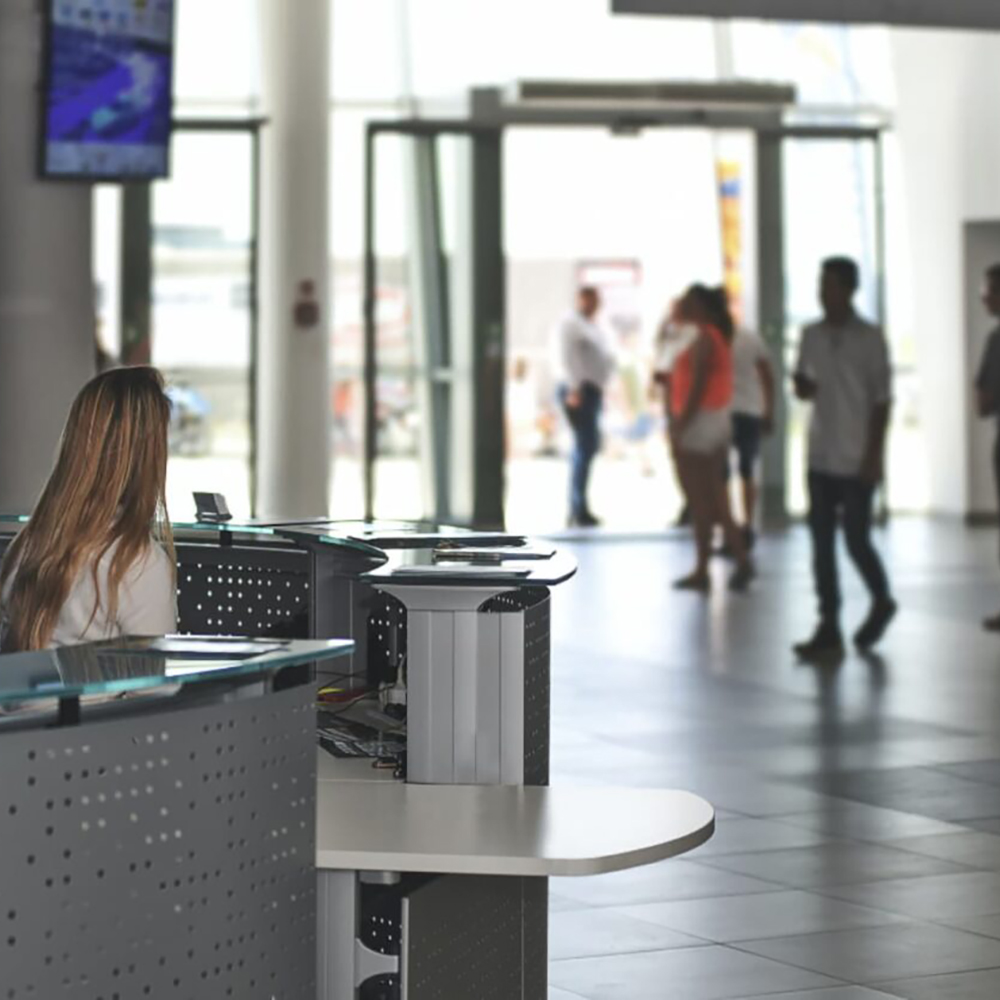
Visitor management security services are a set of procedures and technologies designed to control and monitor the entry of visitors, contractors, and guests into a facility. These services are employed to enhance security, track access, and create a safer environment for both the visitors and the host organization.
Visitor management is crucial in various settings, including corporate offices, government buildings, educational institutions, healthcare facilities, and industrial sites. Here are the key components of visitor management security services:
- Visitor Registration: Visitors are required to register their presence upon arrival. This typically involves providing identification, contact information, purpose of the visit, and other relevant details.
- Access Control: Depending on the security level required, access control measures are implemented to grant or restrict visitor access to certain areas within the facility. This may include the use of access cards, visitor badges, or biometric authentication.
- Identification Verification: Visitors are required to provide identification, such as a government-issued ID or driver’s license, which is verified against a database or through visual inspection to confirm their identity.
- Appointment Scheduling: For planned visits, appointments can be scheduled in advance, allowing the host organization to prepare for the visit and streamline the check-in process.
- Check-In Kiosks: Self-service kiosks equipped with touch screens and document scanners can be used for efficient and contactless visitor check-in. Visitors can input their information and print their badges without assistance.
- Visitor Badges: Upon check-in, visitors are issued temporary visitor badges that clearly display their name, photo, and other relevant information. These badges help identify authorized visitors and their purpose.
- Visitor Logs: Maintaining digital visitor logs that record visitor details, including entry and exit times, destination within the facility, and the name of the host. These logs are useful for tracking visitor activity and providing an audit trail.
- Security Screening: Depending on the facility’s security protocols, visitors may undergo security screening, which could involve bag checks, metal detectors, or X-ray scans.
- Alerts and Notifications: Integrating the visitor management system with other security systems, such as access control and surveillance, to trigger alerts or notifications in the event of security breaches or unauthorized access attempts.
- Temporary Access Permissions: Providing visitors with temporary access permissions that are limited to their scheduled visit duration and restricted to approved areas.
- Integration with Watchlists: Screening visitors against watchlists or databases of individuals with restricted access, potential security risks, or legal concerns.
- Host Notifications: Alerting the host employee via email or SMS when their visitor arrives or when a scheduled visitor check-in is complete.
- Data Privacy and Compliance: Ensuring compliance with data privacy regulations, such as GDPR or HIPAA, when collecting and storing visitor information.
- Visitor Escorting: In high-security settings, assigning an employee or security officer to escort visitors throughout the facility to ensure they remain in authorized areas and do not pose a security threat.
Visitor management security services help organizations maintain a secure environment while also offering a professional and efficient experience for guests. These services can be facilitated through dedicated visitor management software, and many organizations choose to outsource visitor management to specialized providers or use integrated security systems that incorporate visitor management features. The specific requirements for visitor management depend on the organization’s security policies, the nature of the facility, and regulatory compliance.